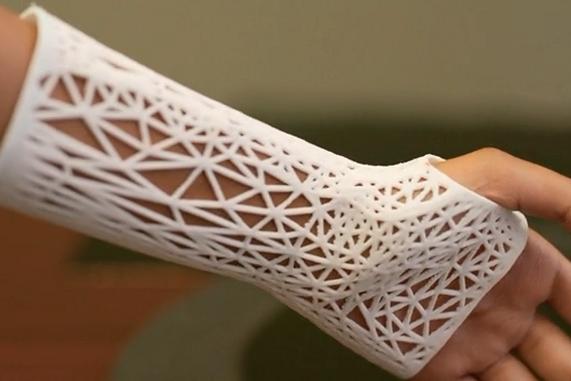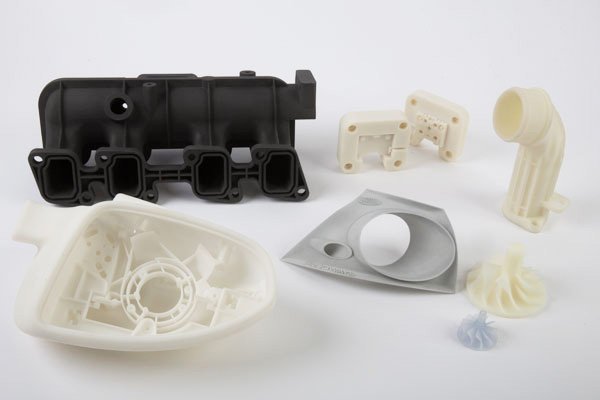3D Printing and Injection molding are the trending manufacturing processes today. Whether you are looking for 3D printing or injection molding in Australia, or whichever corner of the world you may be in, this guide will help you understand the differences between both and choose the right one.

Table of Contents
What is 3D printing?
3D Printing is an additive manufacturing technique. A physical object is made from a 3D CAD file and a printer that lays down thin layers of material, one at a time until the end product is created. There are many 3D printing technologies available like Stereolithography, Fused Deposition Modelling, Selective Laser Melting, etc. Some of the best real-world applications of 3D printing are a 400 sq. ft. house in Moscow which was constructed in less than 24 hours, cake decorations, firearms, musical instruments like flute, violin, etc. Basically, you can create anything that comes to your mind, and all you need is the right digital files, materials, and a 3D printing partner to help you with tips.

What is injection molding?
Injection molding is commonly used for fabricating plastic parts. In this process, the plastics’ pellets are heated and melted in the injection molding machine and injected into the mold; it then cools and solidifies. Then the finished part is ejected out of the machine. This method is apt to produce thin-walled plastic parts, which are generally used in domestic appliances, power tools, everyday domestic items like toothbrushes, small toys.
3D Printing vs injection molding
Here are some of the basic assessment factors before proceeding with any process.
Volume:
3D printing fits the bill for producing small quantities of parts, say less than 200. Whereas injection molding is ideal if the number of parts is more than 1000 as it can use a higher number of molds
Speed:
The lead time for 3D printing smaller parts is faster because there is no special tooling and additional setups required. You can reach your audience quickly, but if the parts are large, it takes longer. In the latter process, the cycle times are just seconds where hundreds to thousands of parts can be made in a day.
Designs:
3D printing is advantageous for printing parts that have intricate designs and complex geometries. This is because injection molding machines have draft angles that are usually between 1 and 1.5 percent and differ depending upon the geometry, finish, and texture and chances are the parts may be ejected with damages.
Materials:
Materials compatible with 3D printing are diverse, like plastics, aluminide, nylon, paintable resins, high-detailed resin, bronze, titanium, aluminum, nickel, gold, graphite, etc. In injection molding, thermoplastics and other polymers like crystalline plastics, polyethylene, polystyrene, etc. are used. Injection molding also requires additives like calcium, glass fibers, ceramic fillers, etc due to polymers natural friction characteristic that enables it to stick onto the molds, may cause scratching and further delay the processing time. Before selecting the suitable one, make sure to check each of their properties and grades.
Flexibility:
When it comes to flexibility of working, 3D printing wins it. The designs can be changed or altered any number of times during the digital file production, and numerous prototypes can be produced. In injection molding, the customization aspect is either limited or not available. As the machine set up times are longer, and molds have to be re-made every time a design is altered, any design changes come with additional costs and time.
Cost-saving potential:
The cost could be the most important, ultimate factor in choosing your manufacturing technique. When considering the tooling costs and part costs, in 3D printing, while there is no tooling involved, the cost of designing the parts may be more. Again, this price depends on the thickness of the model, complexity, the finishing elements, and the materials whether they are high end. Additionally, prototyping further helps save money because designs and functionality flaws are detected early before the actual fabrication.
In injection molding, cutting and making the molds could be expensive unless you produce en masse. The prices will be further quoted considering the amount of raw material, and the volume of parts will be taken into account.
Benefits of 3D printing :
• 3D printing is an entirely automated process; no human resources are needed to maintain and supervise the process.
• It is suitable for the environment in a way where it creates less wastage; that is, only the required quantity of recyclable materials for the part are used, further bringing down the cost; no powers and energies are wasted on establishing factories.
• There is no need for any stock inventories, and 3D design files can be printed any time by storing them in virtual libraries.

Limitations of 3D printing :
• Post-processing works like painting, sanding; water jetting are involved
• As everything is automated, low-skilled workers may be at risk or even deprived of jobs.
• Printing large parts is a little difficult as the printing chambers accommodate only smaller ones.
Benefits of injection molding :
• Increased tolerance better than 3D printing up to 0.20” and tighter tolerances down to 0.005” are feasible.
• Parts can be combined with additives like glass fibers for more strength and durability.

Limitations of injection molding :
• As mentioned earlier, injection molding comes with higher tooling costs, tight restrictions on part designs, and inappropriate for smaller quantities are its disadvantages.
Overall, both have their own benefits, drawbacks, and features and more or less complement each other. Hence, it is recommended you choose to depend on the volume and budget.
Author’s Bio :
Kiran Hurkadli is the director of Zeal 3D Printing. Zeal 3D Printing Services offering a 3d printing solution in Australia. He is now moving to Augmented Reality Services and also director of Zeal AR. From the last 15 years, we are best to deliver services as per client’s requirements. He has earned good success in the 3d printing as well as 3d scanning services for his unique and custom designs for his clients.
Social Media Links :
Facebook : https://www.facebook.com/zeal3dprintingservices/
Pinterest : https://www.pinterest.com.au/zeal3dprinting/
Twitter : https://twitter.com/Zeal3d
Linkedin : https://www.linkedin.com/company/zeal-3d-printing/
Instagram : https://www.instagram.com/zealprinting/


